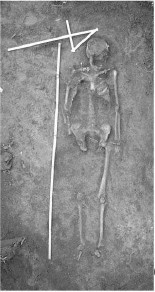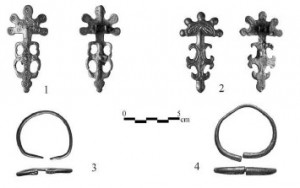Our third departmental research seminar this series was on Friday 16th October. Following the theme of funerary practices, Prof. Florin Curta of the University of Florida presented: “The Enisala grave: Bioarchaeology, social status, health care and ethnicity in early 7th century Dobrudja (Romania).
Prof. Curta provided an alternative view to the interpretation of grave goods and ethnicity. He challenged the assumption that social ethnicity represents social reality and the emphasis placed on material culture items to define group boundary markers. Rather than using items as identity markers, he suggests that they may have been used to create new ethnic identities by combining characteristic elements from other regions and recognised ethnic groups. The example of the Enisala grave provides evidence for such a combination.
The Enisala grave contained the burial of an adult female aged approximately 50 years at the time of death. The woman had suffered from compression fractures to the lower spine, most likely indicating osteoporosis. These fractures had healed prior to her death, but would have been very painful and limited her movement during life. It was suggested that this individual held a position of status in her community on the basis of grave goods, and the evidence that her injuries would have required care and support.
Prof Curta demonstrated that the items she was buried with suggest a non-local ethnicity, or the creation of a new ethnic identity through the combination of local and foreign styles. This was especially evident in the adornment items found on the skeleton. The styles of the brooches and bracelets were different, representing aristocratic designs from Crimea and a region of present-day Ukraine. Both of these stylistic regions of origin are distant to the location of the Enisala burial.
One of the brooches was particularly noteworthy in that it had been repaired and clearly had a use-wear life of its own. Selection of this particular brooch for inclusion with the body in the burial suggests that the item was either a personal piece, or that it held significance within the community and was selected on other grounds.
The creation of a new ethnic identity, or ethnogenesis, is sometimes the result of resistance to oppression. A fresh look at the evidence provided through archaeological research has the ability to shed light on the relationships between social status, ethnicity and bioarchaeology, as proven in the Enisala grave.
We thank Prof. Curta for this interesting presentation and a thought-provoking discussion. You can learn more about Prof. Curta’s research on his academia page.
Sources:
Ailincăi, S., Constantinescu, M., Curta, F., and Soficaru, A. (2014): An Early Seventh-Century Female Grave from Dobruja. Archaeologia Bulgarica, XVIII, I, 65-84.
Written by Belinda Tibbetts.


